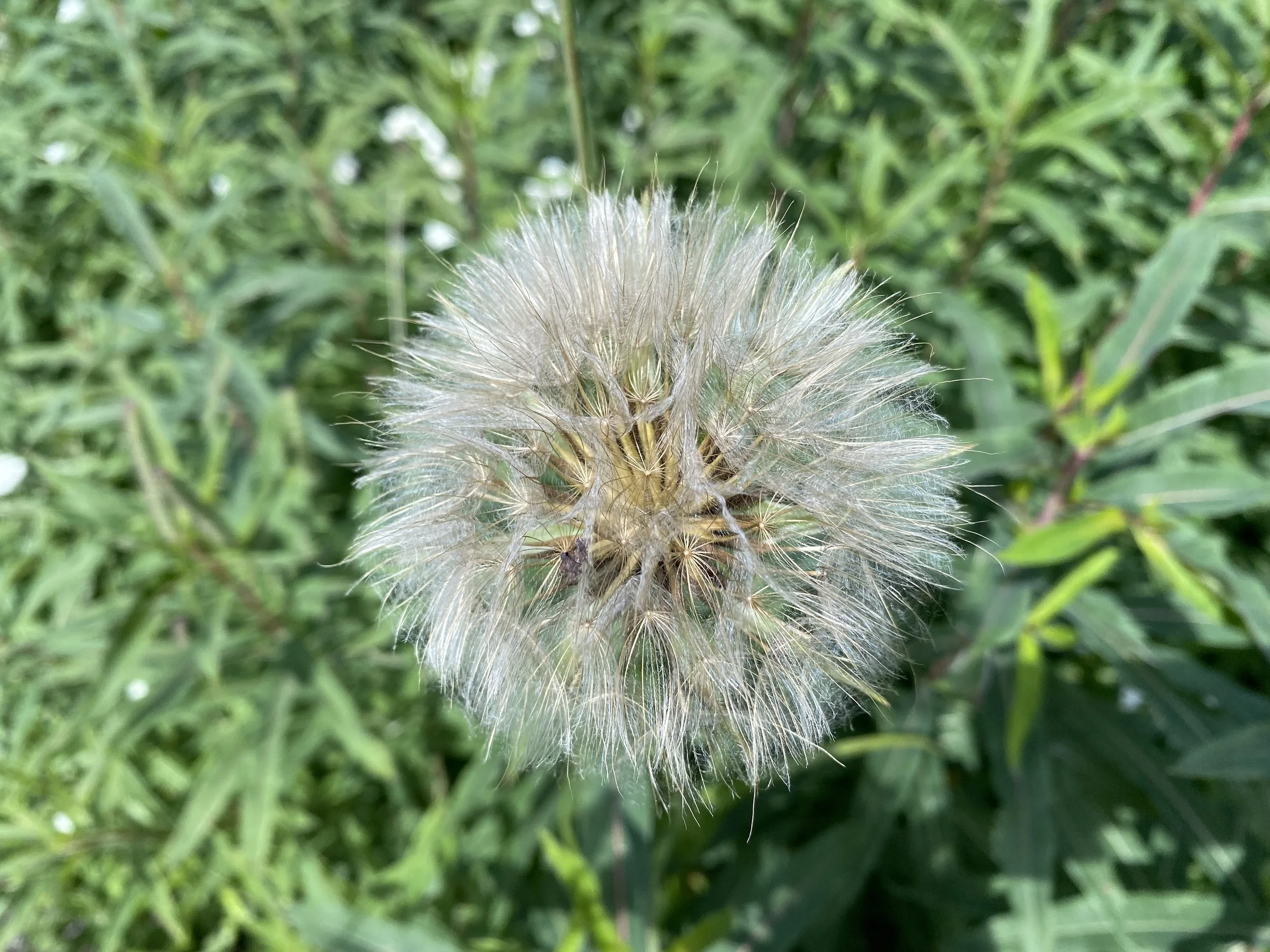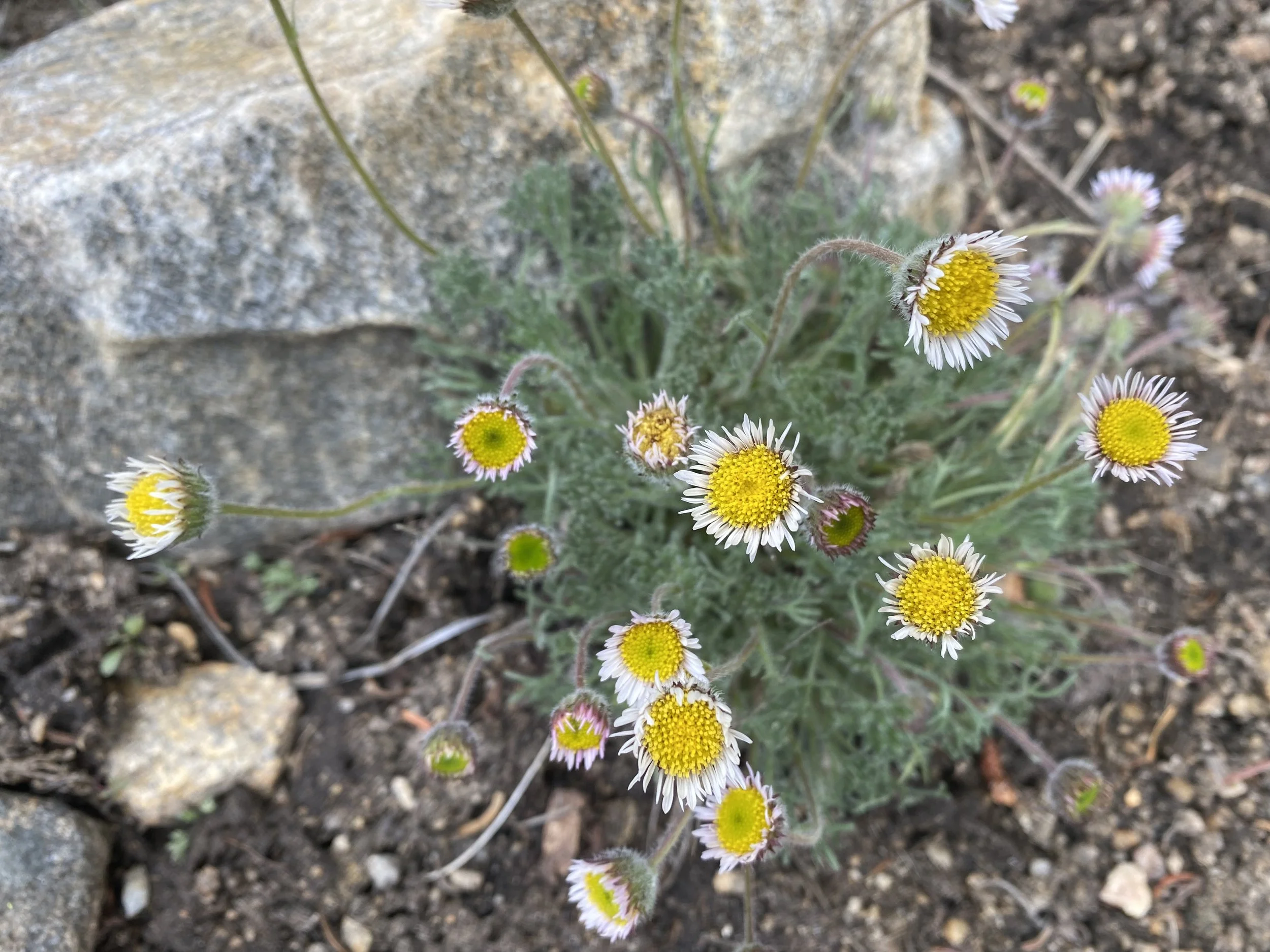Tragapogon dubius, June 7, 2022
Tragapogon pratensis, June 14, 2022
T. pratensis, seedhead, roadside 10,000’, August 8, 2022
Common & scientific name
Yellow salsify, Tragapogon dubius & T. pratensis
Family
Sunflower, Asteraceae
Location
Roadside, 8,300’
Fun, weird, helpful, or little known fact
The first, a non-native, is known mostly for its huge, dandelion-like seed head. Salsify was introduced from Europe owing to its edible roots. The pointy phyllaries exceeding its ray florets distinguishTragapogon dubius from T. pratensis, a native, below.
T. pratensis, second bloom of season, roadside 10,000’, August 8, 2022
T. dubius second bloom, Twin Lakes area, 9,400’, August 17, 2022





















